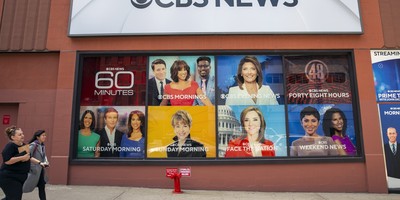In 2005, the National Rifle Association of America enacted a law that probably saved the American gun-making industry from bankruptcy. And just this last week, the Supreme Court rejected a constitutional challenge to this landmark legislation, ensuring this law stays on the books to preserve America’s culture of lawful firearm ownership.
For years, opponents of the Second Amendment sought to eliminate gun rights by eliminating guns. Anti-gun groups, working with big-city mayors like Michael Bloomberg of New York City, devised a scheme to rid America of firearms.
They filed product liability suits, alleging that firearm manufacturers should be held liable for any injury caused by a firearm. And not just a gun made by that particular gun-maker; the suits go after every gun-maker for every gun injury.
This approach was based on the legal strategy used against Big Tobacco. It’s a liberal theory called market-share liability. Because smokers use cigarettes of different brands, a person who gets lung cancer after twenty years of smoking isn’t sure how much of that cancer is traced to any particular tobacco company.
So the courts adopted a theory from the infamous Clinton-Reno-Holder Justice Department, saying that every tobacco company should be held liable for whatever percentage of cigarettes they sell in the market. So for example, if Camel accounts for 30% of all cigarettes sold, then Camel is liable for 30% of the damages in any injury lawsuit.
The gun-grabbers pushed the same theory here. They said that gun makers should be held liable for any injury, and that because it’s often unknown what gun model caused an injury (if the firearm is never recovered), then every gun-maker must pay according to how many guns they sell in this country.
Recommended
Holding gun-makers liable for the actions of criminals is absurd. That’s like holding Bic accountable for arsonists, or Buick for drunk-driving crashes, or Craftsman for an assault perpetrated with a hammer.
A gun is a tool like any of these other items. If properly made and lawfully sold, there should be no liability.
But these anti-gun fanatics, with the help of the Brady Center, almost succeeded. They brought nationwide suits in the most anti-gun jurisdictions in the nation, and were heading towards a massive judgment what would have driven gun-makers into bankruptcy. Along the way, legal costs for gun makers had already mounted into the hundreds of millions of dollars, putting all those companies on the ropes.
In response, the NRA made stopping these predatory lawsuits its top legislative priority. Every anti-gun Democrat, to please their trial-lawyer bosses, worked furiously to stop the bill, and succeeded for years.
But 2002 and 2004 saw historic victories for pro-gun candidates, mostly Republicans. Consequently, the Protection of Lawful Commerce in Arms Act was finally passed and signed into law in 2005 to stop these junk lawsuits.
Anti-gun forces immediately pressed their court cases, arguing that the new law didn’t apply to current cases, despite the fact that the law was explicitly retroactive to cover all lawsuits. They only found one New York federal judge willing to go along with them, who was promptly reversed on appeal to the Second Circuit.
The only way left to stop this law from fulfilling its promise to keep America’s firearm heritage alive was to have it struck down as unconstitutional.
Predictably, that’s exactly what anti-gun forces tried to do next. Alleging one ridiculous theory after another about how this federal law violated the U.S. Constitution, three lawsuits were pushed all the way through the legal system to the U.S. Supreme Court. In March of 2009, the Court refused to grant certiorari to review Lawson v. Beretta and City of New York v. Beretta (the latter being the pet-project of the rabidly anti-gun Mike Bloomberg).
And last week on Dec. 14, the Supreme Court rejected what will hopefully be the last such ridiculous suit, Adames v. Beretta.
The right to bear arms is essential to liberty itself. It’s an insurance policy, enshrined in the Second Amendment of our Constitution to make sure America would always remain the Land of the Free.
For 138 years, the National Rifle Association has fought to protect this right for future generations. This 2005 tort-reform law is one of the NRA’s greatest achievements in protecting our Second Amendment rights.
They’re doubtless celebrating this victory at NRA headquarters, as well they should. And it’s welcome news for all of us who are among America’s 90 million gun owners.
Merry Christmas, firearm owners. Don’t forget to thank the NRA for this long-awaited Christmas present.






















Join the conversation as a VIP Member